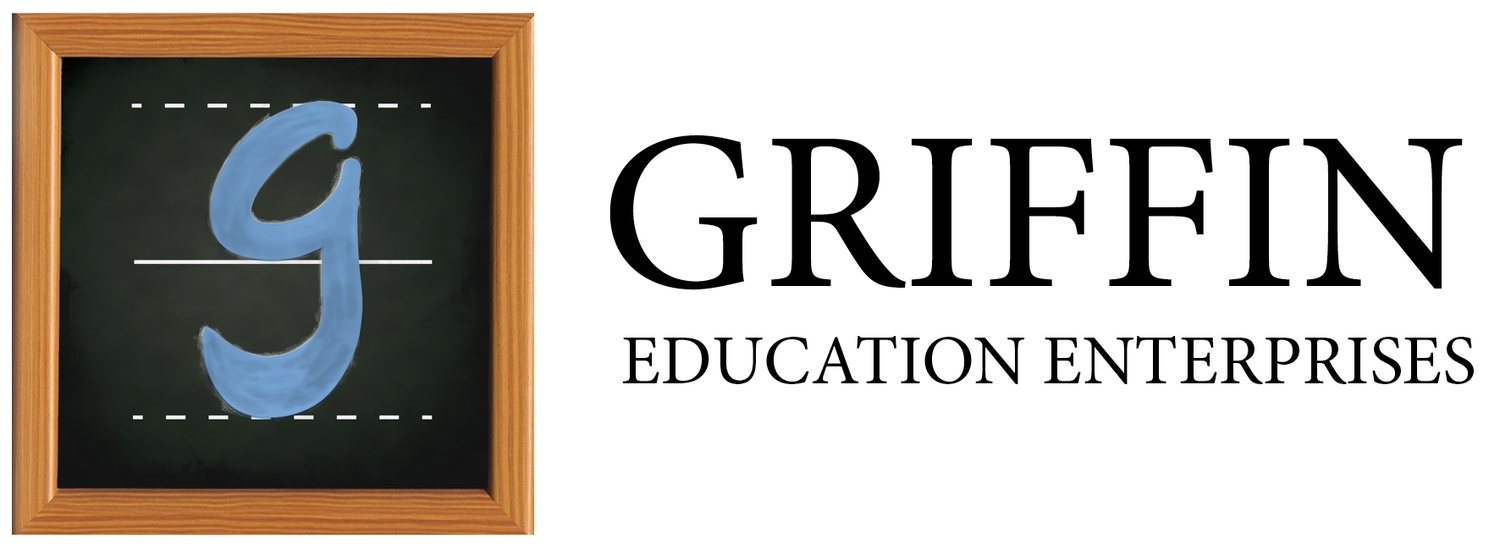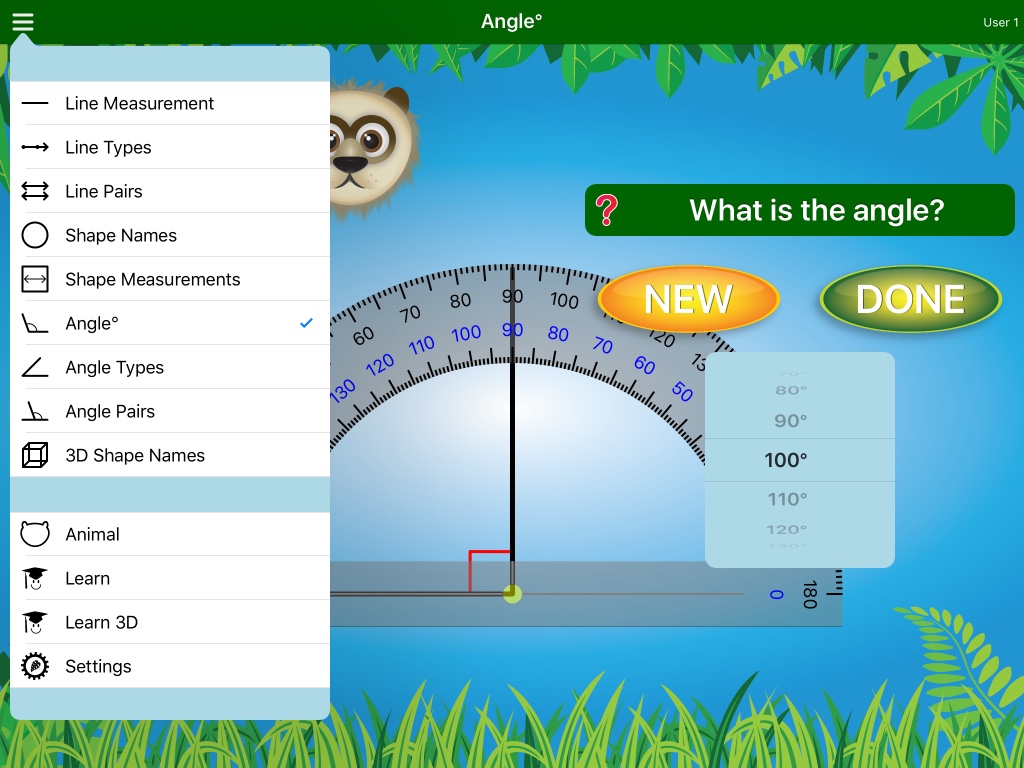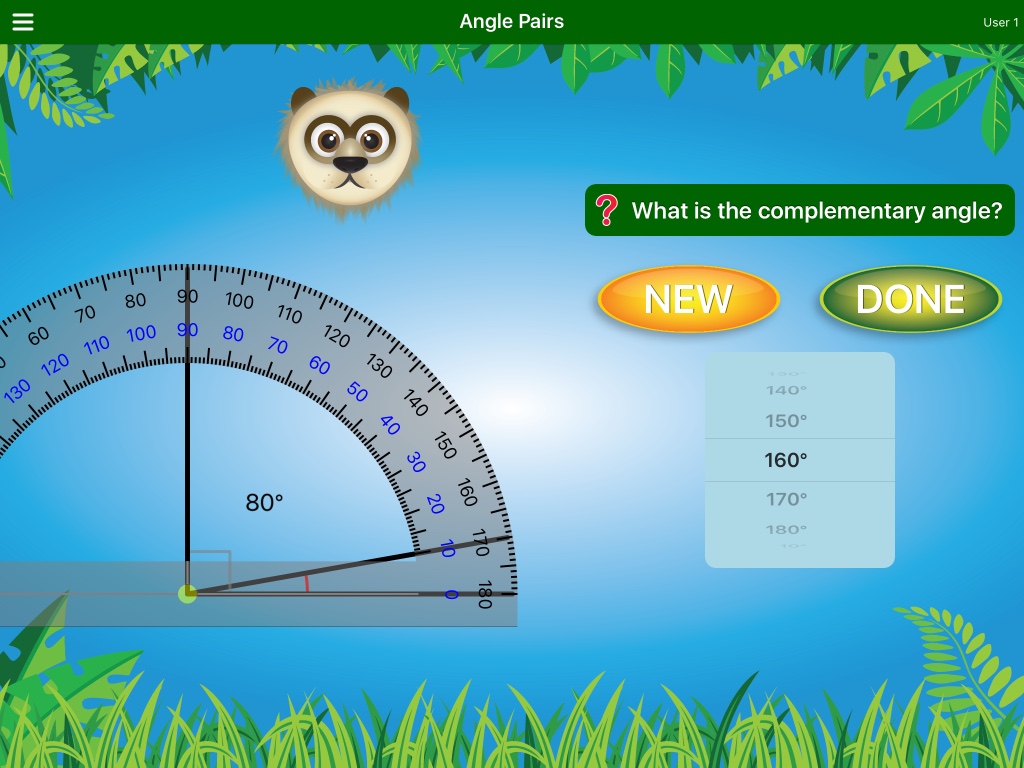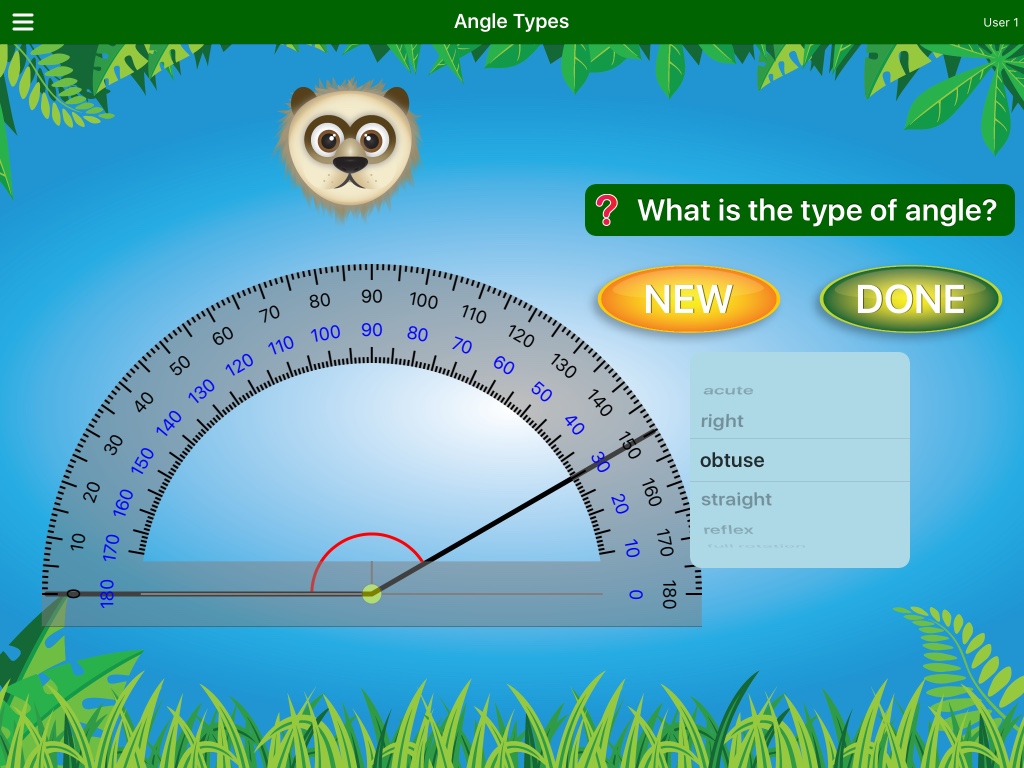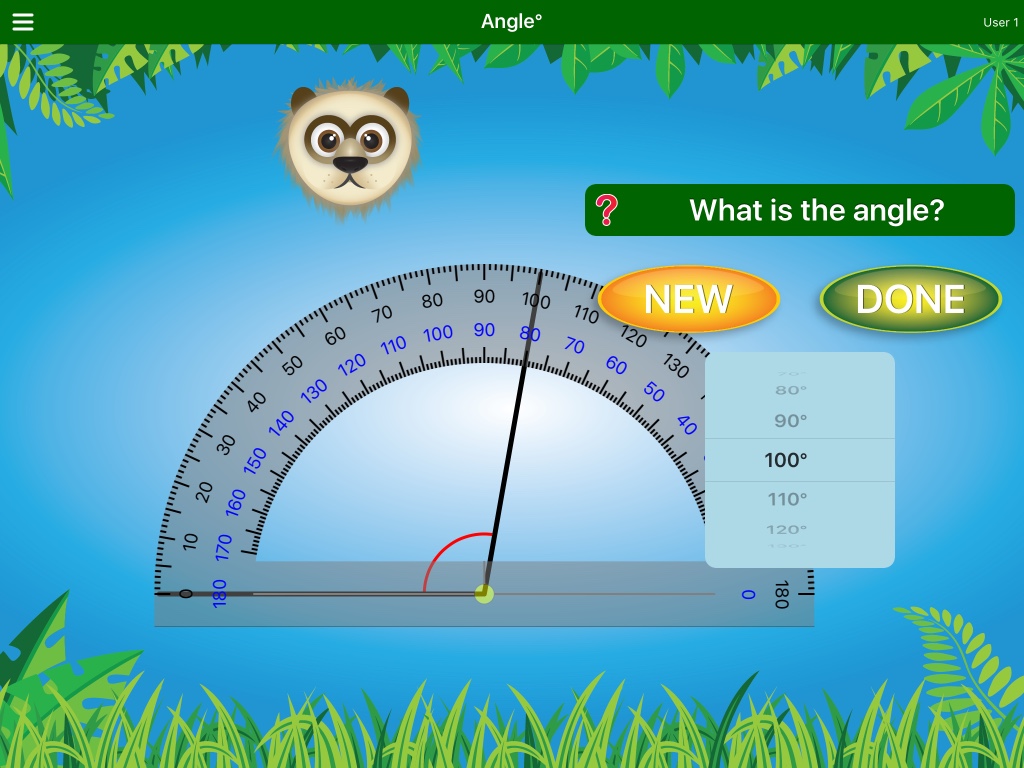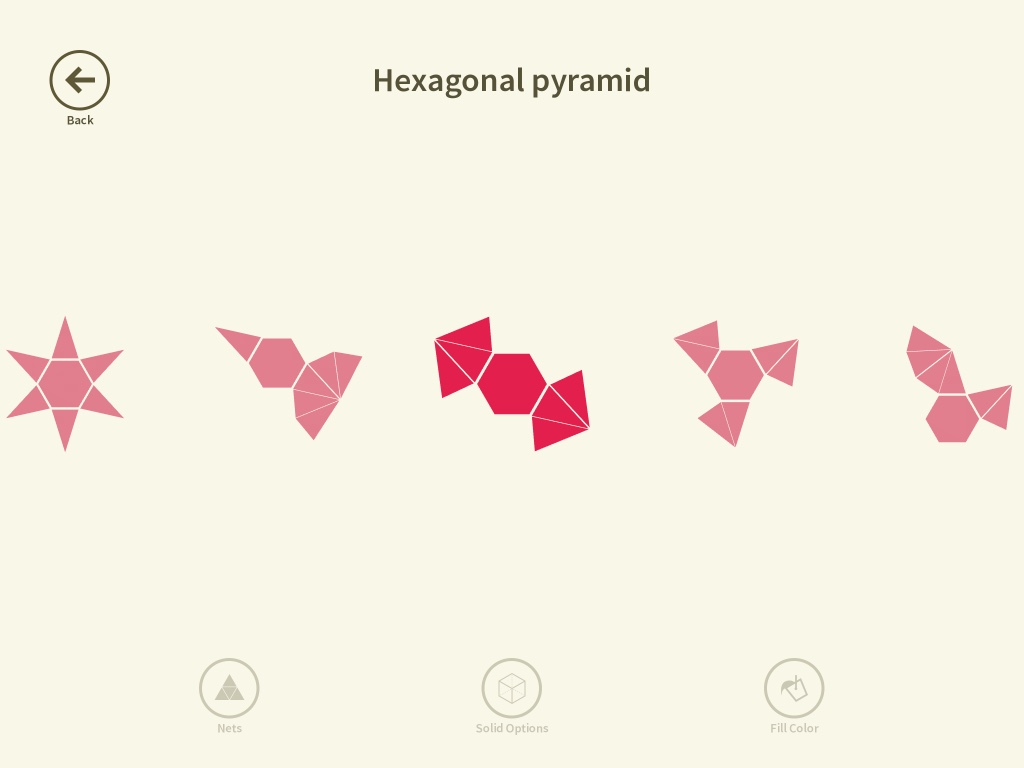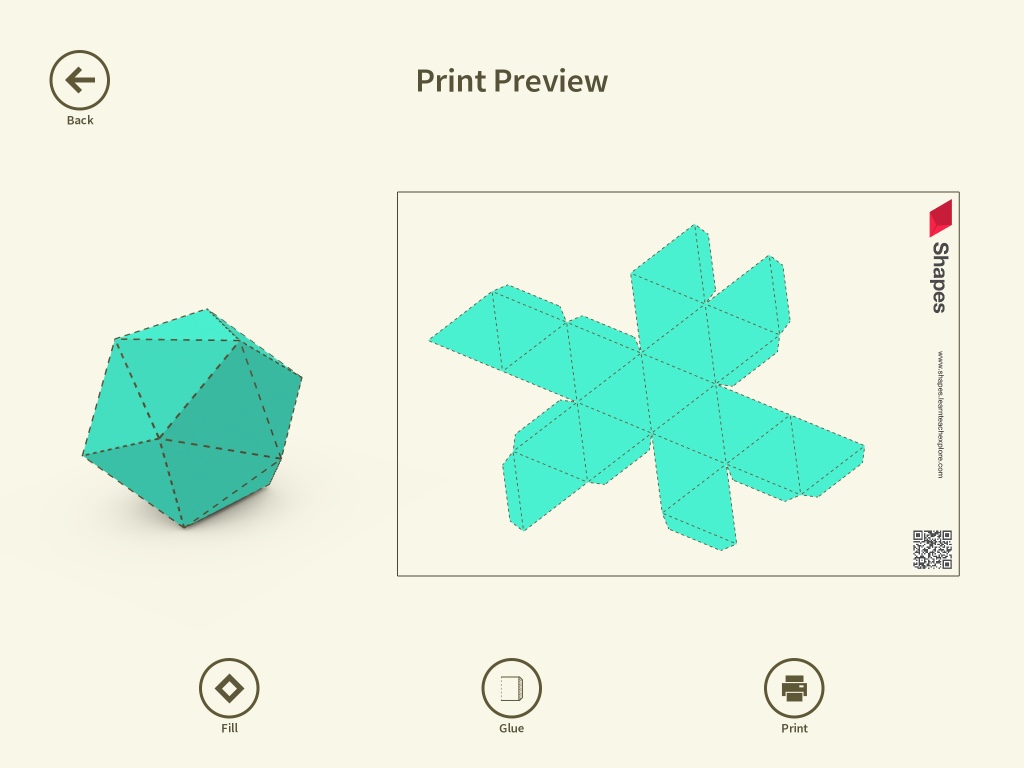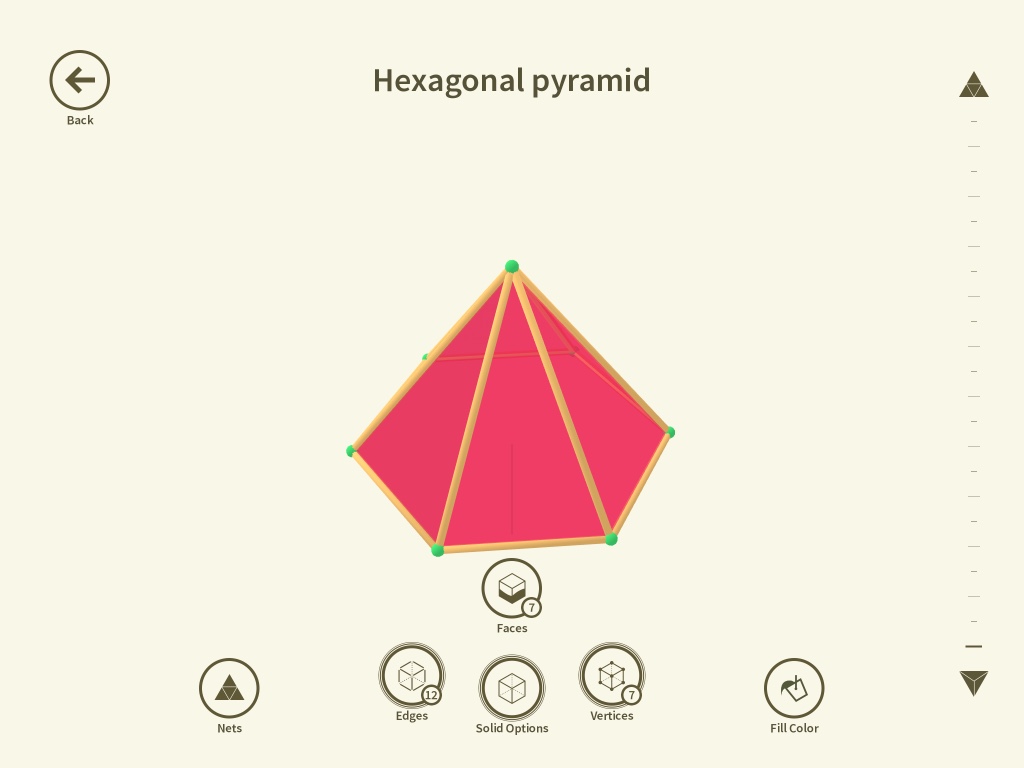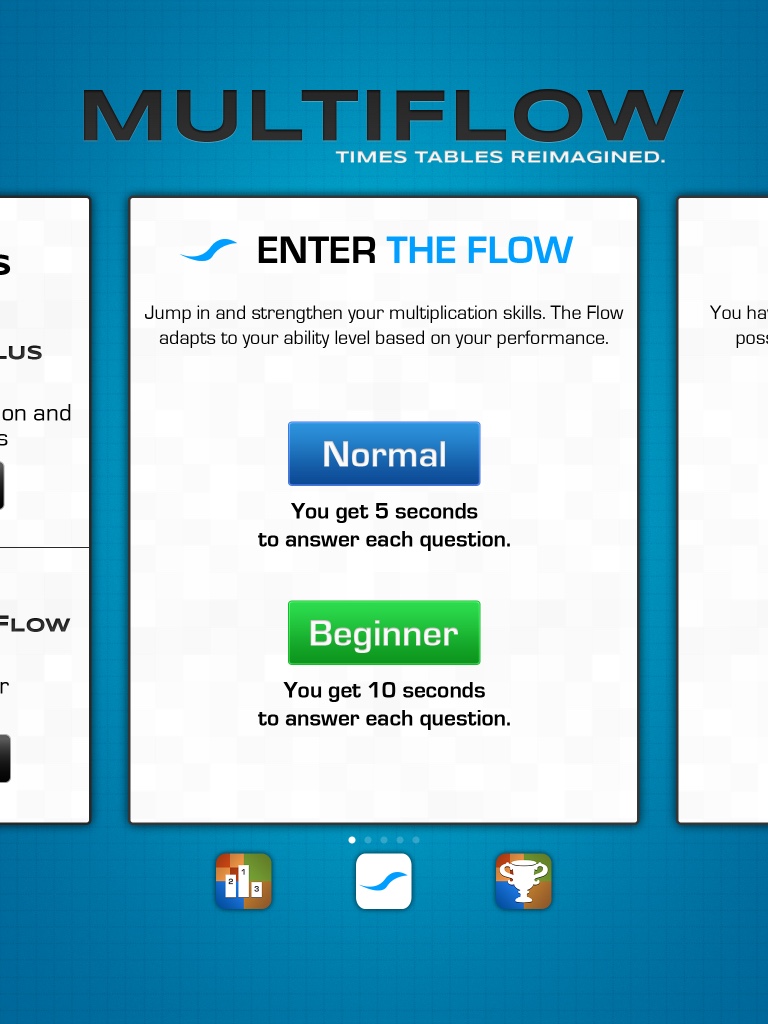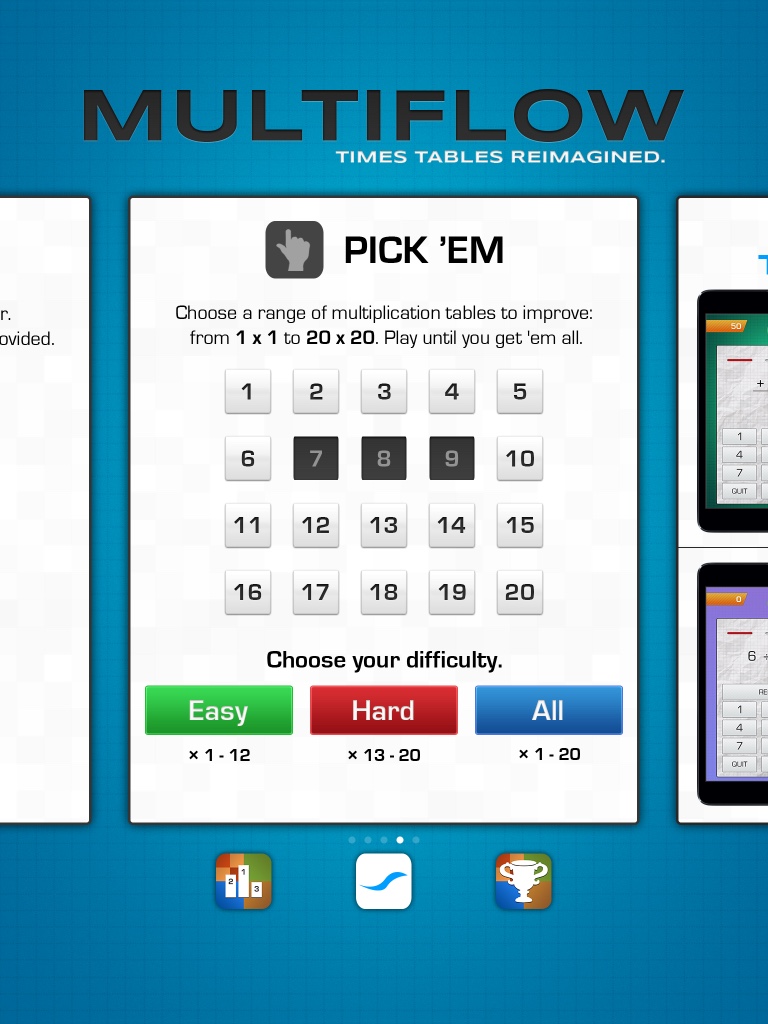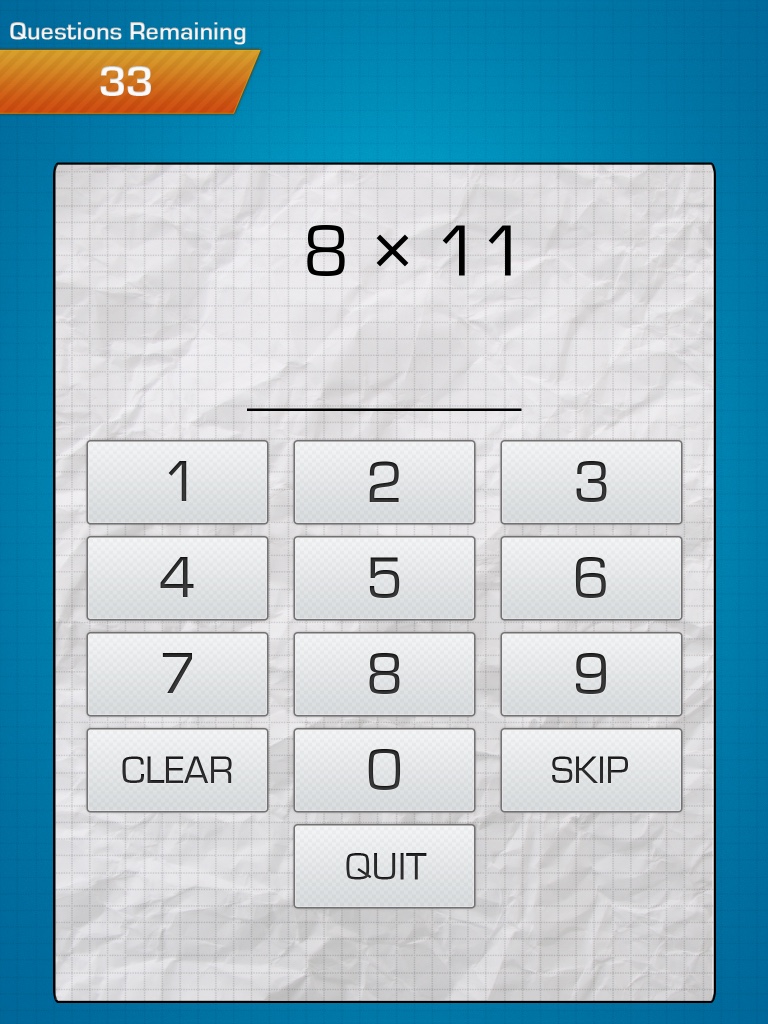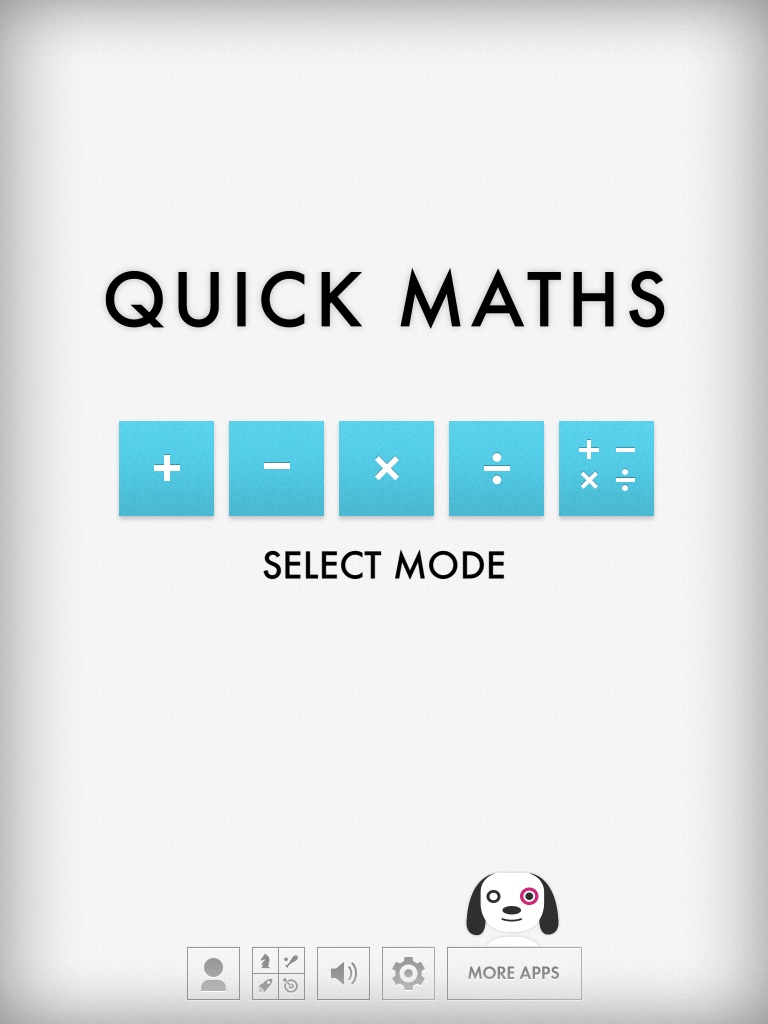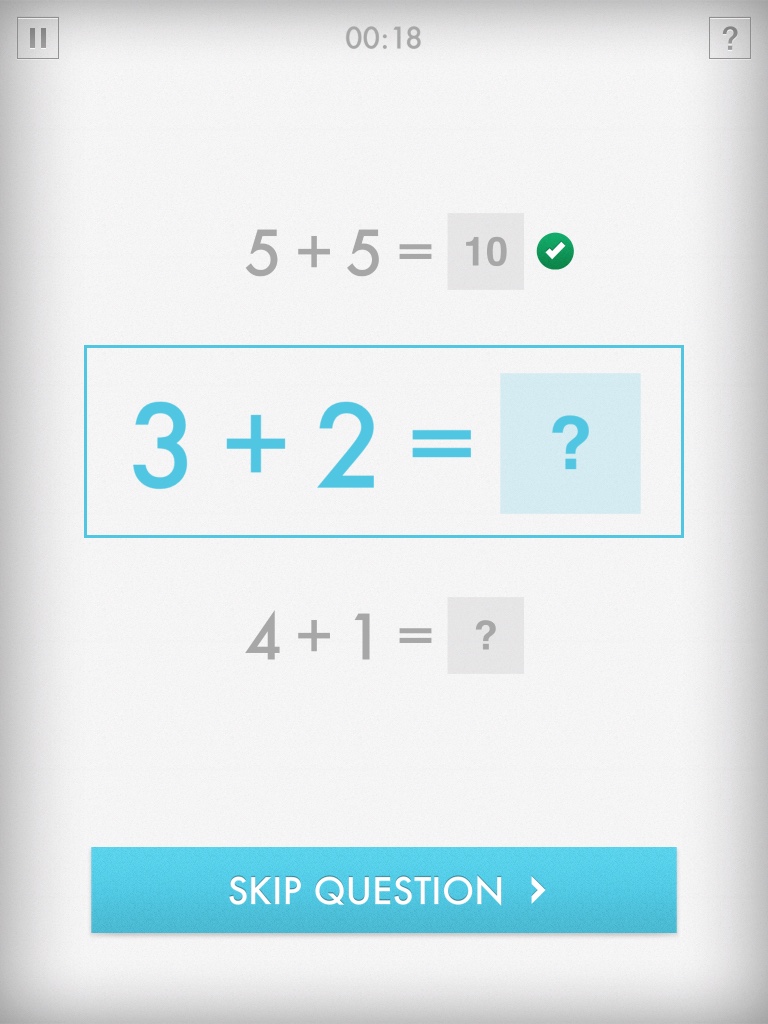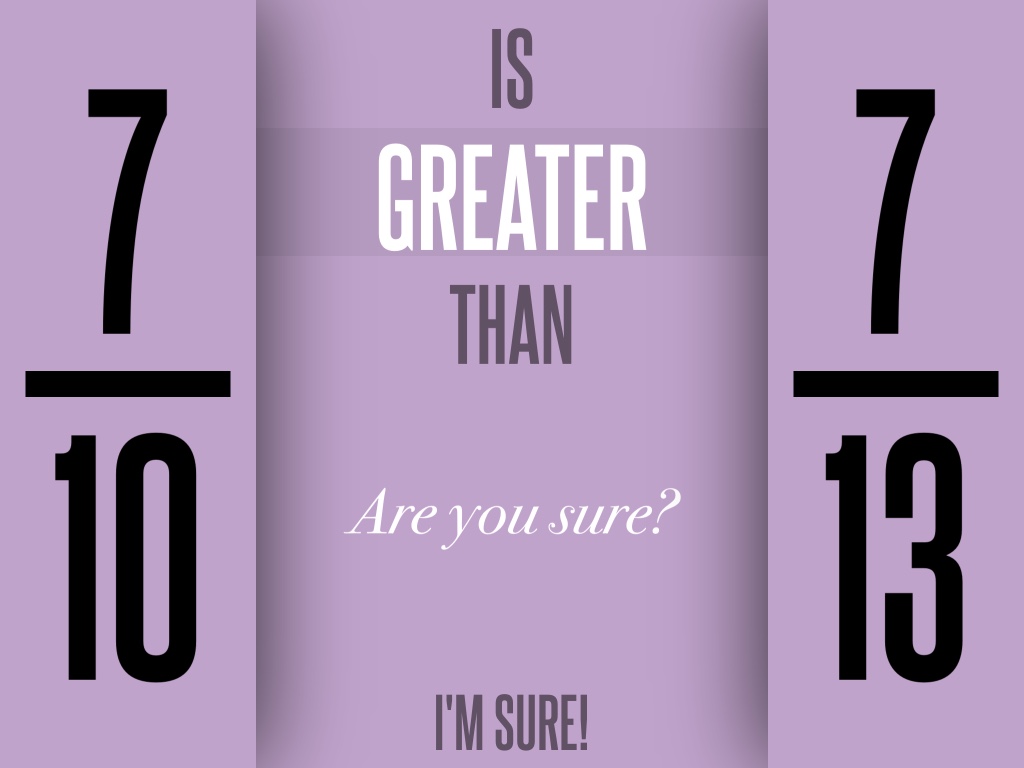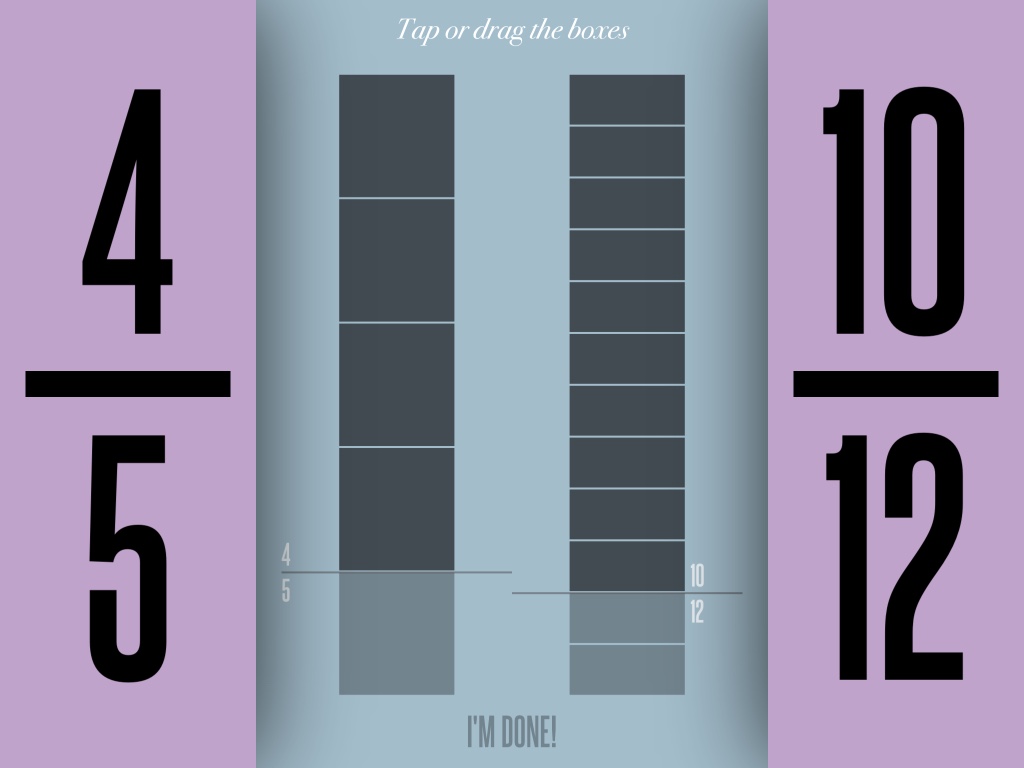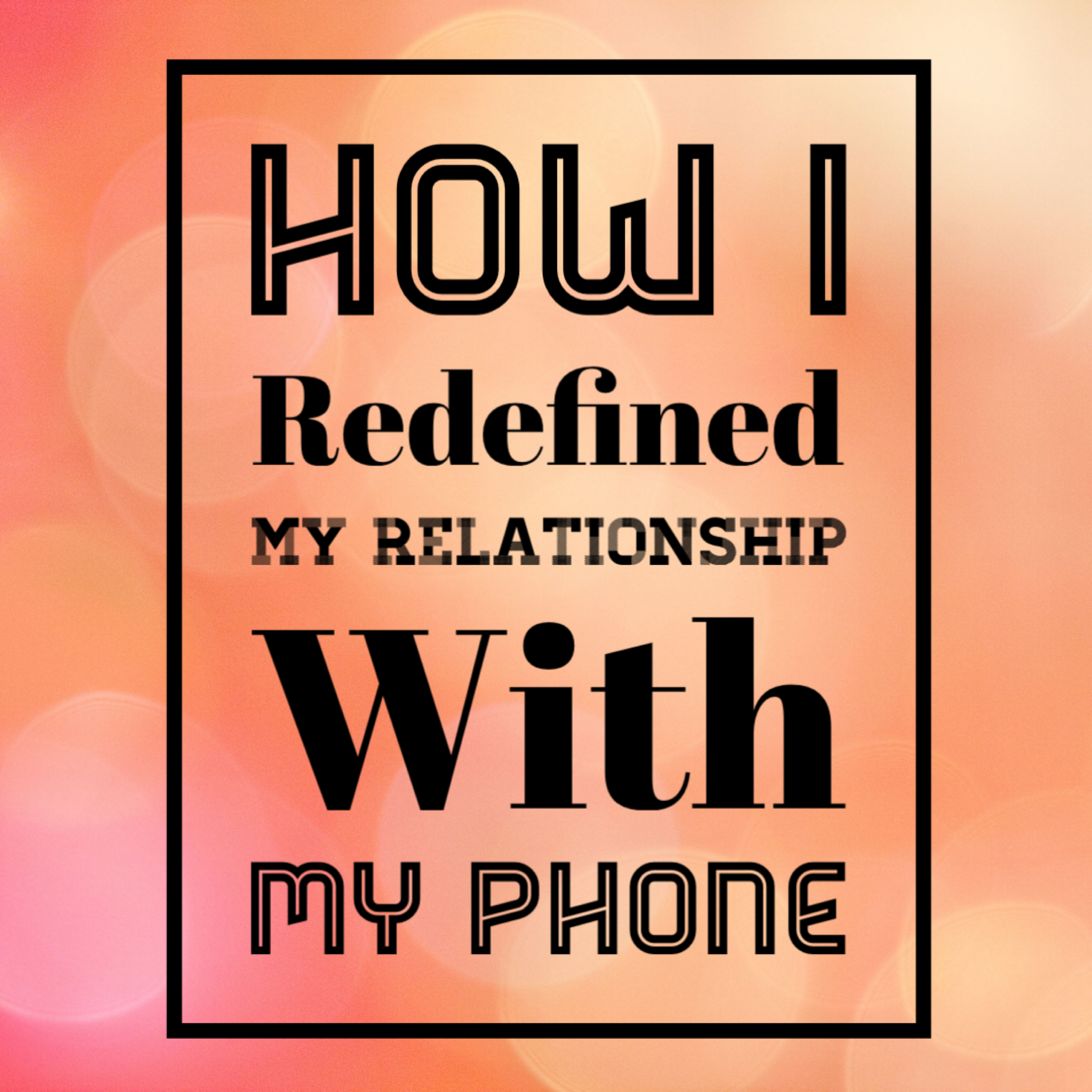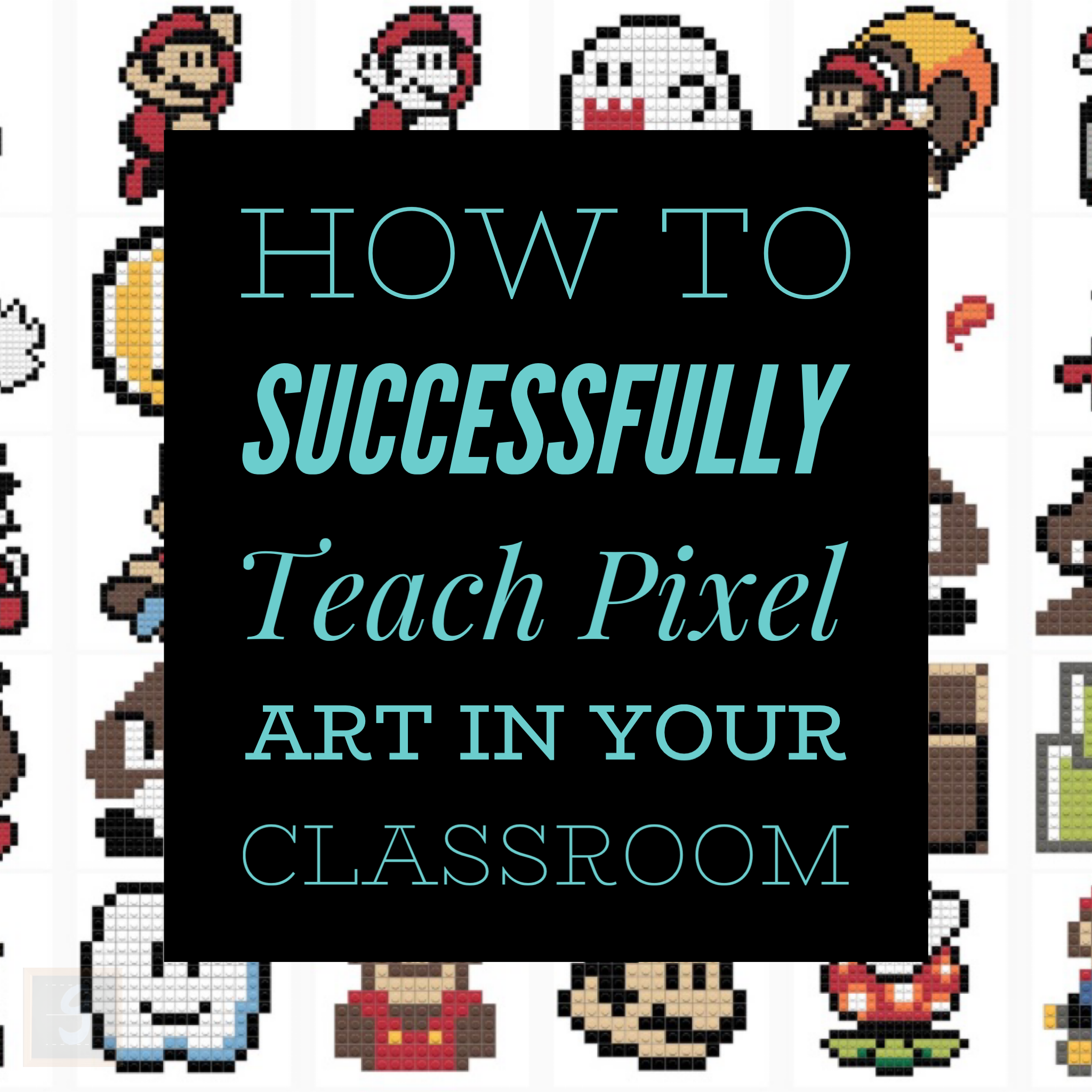Knowing which apps are worth using in the classroom can be difficult. When browsing the app store you can’t guarantee that the most popular apps or even the most highly rated ones will be exactly what you are looking for. I can guarantee the following Maths apps will help you enormously in the classroom. Why the guarantee? Well I’ve been a classroom teacher for eight years and I’ve accumulated thousands of hours of private tuition. I’ve used these apps over and over again as part of my teaching pedagogy. So here are my ‘Top Five Maths Apps for Primary School Teachers’.
1. BEST MEASURING APP: Jungle Geometry by Andrew Short
Recommended for middle and upper primary
I used to think that the majority of the measurement and geometry apps on the App Store were of a poor quality. A lot of these measurement and geometry apps were: poorly designed, taught only one concept and came under the ‘edutainment’ genre of iPad apps. This all changed when I downloaded Jungle Geometry (JG). The ‘Jungle’ series of iPad apps have always been of a high quality and JG would have to be the best of them. Here is what JG will help you to teach.
· Measuring straight lines
· Recognising the different types of line
· Recognising the different pairs of lines (perpendicular, intersecting and parallel)
· Names of 2D shapes (square, rectangle, circle & triangle)
· Measuring the features of 2D shapes (radius, diameter, perimeter etc)
· Naming 3D shapes (sphere, prisms and pyramids)
· Measuring angles using a digital protractor
· Recognising the different angle types (acute, right, obtuse, straight, reflex & revolution)
· Working out the supplementary and complementary angles of a straight line
The three dot points highlighted in bold are the features of JG that I use the most. As a year 5/6 primary school teacher, I occasionally come across students who struggle to use a protractor e.g. they have trouble reading the numbers or knowing whether to measure an angle from left to right or right to left. Using a protractor can be tricky. How many times have you been unsure whether an angle is 130 degrees or 131 degrees using those tiny 180-degree protractors?
JG’s measuring angles feature uses a much larger digital protractor to measure angles with. This large protractor helps students to quickly and easily read the angle that is presented to the viewer. In my teaching experience I’ve found this feature serves as a useful scaffold for the weaker students before they move onto using a real protractor. This app well and truly deserves a spot on your iPad’s hard drive.
2. BEST 3D SHAPES APP: Shapes – 3D Geometry Learning
Recommended for middle and upper primary
Just like JG, I found that a lot of the 3D shapes apps on the App Store were pretty terrible and suffered from the same design flaws. Then I came across Shapes – 3D Geometry Learning. Shapes is beautifully designed. So much effort has gone into making this app it would be wrong of me not to mention the sheer amount of craftsmanship that went into its development. So what does Shapes do?
· Displays the different variations of 3D shapes such as pyramids, prisms, solids of revolution (cylinders/spheres) and platonic solids (dodecahedrons etc).
· Shows you the edges, faces and vertices of each 3D shape
· Shows you all the different net variations of each 3D shape
· Allows you to print off the various nets from a wireless printer
Not only has Shapes been incredibly useful for all of the reasons above but its also been useful as a ‘dictionary’ for questions like ‘how many faces does a dodecahedron have?’ Whether it would be for lessons in which you are modelling the features of 3D shapes or an app that students use to investigate 3D shapes with, Shapes comes highly recommend!
3. BEST MULTIPLICATION APP: Multiflow Times Tables Reimagined
Recommended for lower, middle and upper primary
There are a lot of times tables apps in the App Store. Simply type in times tables or multiplication and you will be flooded with hundreds of unappealing, generic apps that look awful! Among the dirt there is a diamond, and this diamond’s name is Multiflow. So what sets Multiflow apart from the other multiplication app clones available on the App Store? Well its in Multiflow’s customisability and diversity. Multiflow’s educational features include.
· Enter the Flow (a challenging game that doesn’t stop until the questions get too hard for you to answer e.g. ten seconds to answer 56 x 79)
· Mad Minute (answer as many questions as you can in a minute)
· Reversals (find the correct question from an answer already provided)
· And mostly importantly ‘Pick ‘Em’ (pick any timetables list that you want to appear in your questions).
Pick ‘Em is the feature I use the most. The ability to customise which times tables a student practises is incredibly useful. I also use Pick ‘Em for some students as part of their Individual Education Programme (IEP). I like the fact that the student has to enter in the correct answer instead of picking from a list of multiple-choice answers. All too often students simply guess the answer instead of having to remember it. Even after a number of years using Multiflow I still haven’t found a better multiplication app.
4. BEST OPERATIONS APP: Quick Maths
Recommended for lower, middle and upper primary
The Quick Maths (QM) series are some of the best educational apps to help students brush up and sharpen those basic number facts. Just like Multiflow, JG and Shapes there is a glut of apps that claim to help students with their understanding of the four operations (add, take, times & divide). QM stands head and shoulders above the rest when it comes to practising and extending a student’s knowledge of the four operations. QM's educational features include the following.
· A levelled difficulty system for each operation (beginner, intermediate, advanced and extreme)
· Students write in their answers with their finger (no data input e.g. calculators or multiple choice answers)
· Records times and allows for multiple user accounts
· FYI Quick Maths+ has questions that require the use of <, > and = if you are looking for something more challenging
I’ve have found this app to be incredibly addictive to play. It’s a real thrill to progressively beat your own personal best time. The difficulty of questions ranges from easy (5+4=9) to hard (x+67=157). You can’t go wrong with using Quick Maths in the classroom.
5. BEST FRACTIONS APP: OhNoFractions!
Recommended for middle to upper primary
Learning about fractions can be challenging especially when it comes to correctly comparing fractions to determine if one is greater than, less than or equal to another fraction. All too often students implicitly think that a larger denominator implies a larger fraction.
OhNo Fractions! does a great job of showing students WHY a fraction is either greater than, less than or equal too another. OhNo Fractions! actually shows you! Literally, it shows you. After pressing the ‘show me’ button OhNo Fractions! brings up a picture of both fractions. It then asks you to correctly put in the right numerator in each of the fractions. This then allows the student to clearly see how the numerator and denominator can change the size of a fraction. Oh No Fractions! also has several features that help students to add, take, multiply and divide fractions.
I’m sure there will be a million different opinions about the top five iPad Maths apps for Primary School Teachers however there is no disputing the awesomeness of these apps. So download them now and try them out for yourself!
If you think this website is awesome then please ...
Bookmark this page.
Follow us on Instagram | @griffin_edu
Like and follow us on Facebook | @griffineducationenterprises
Follow us on Twitter | @Griffin_Edu
Follow us on Pinterest | Griffin Education Enterprises
Join our mailing list down below.
Consider supporting us on Patreon.
And most importantly, share this website with other educators!
